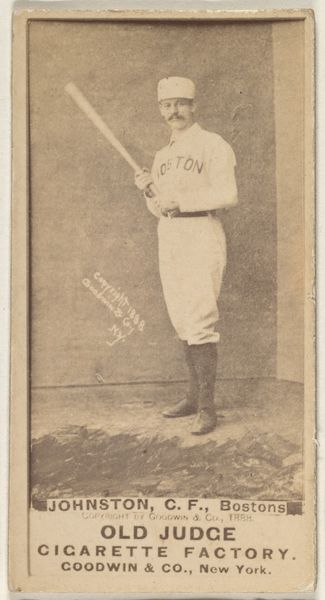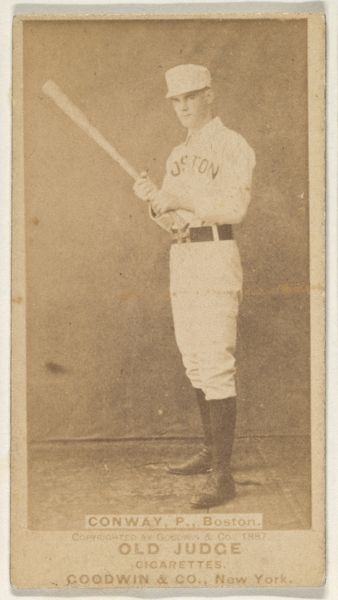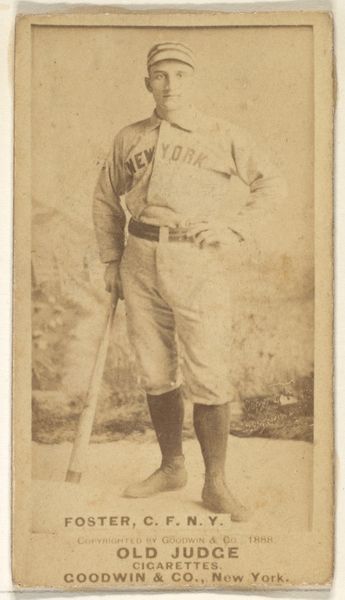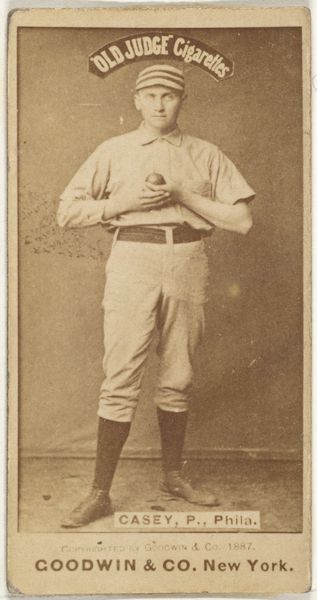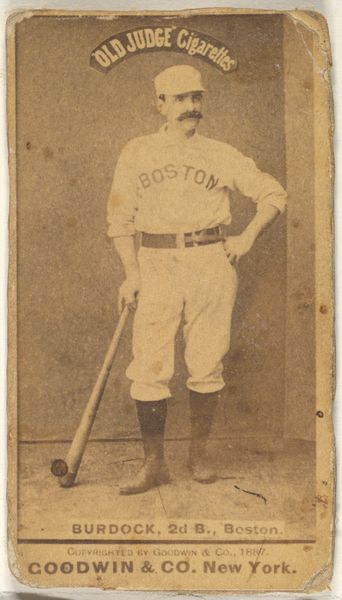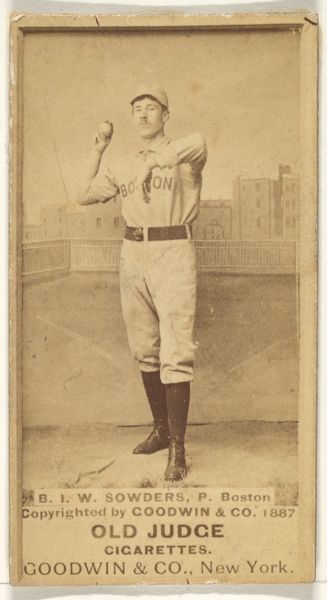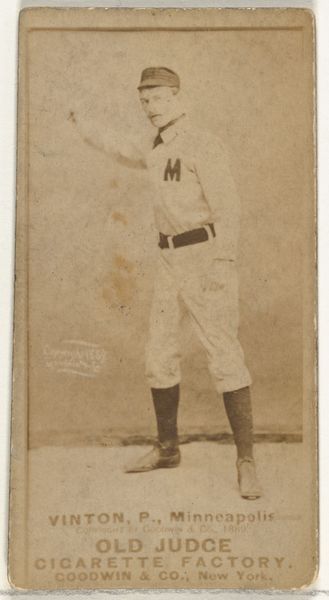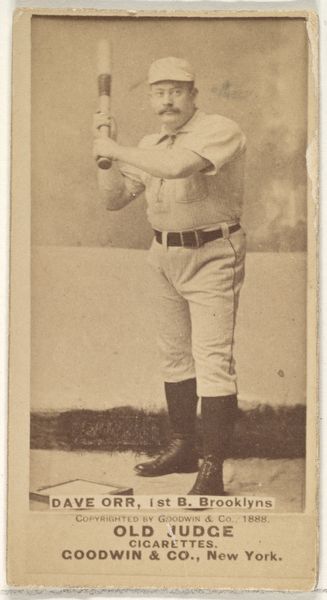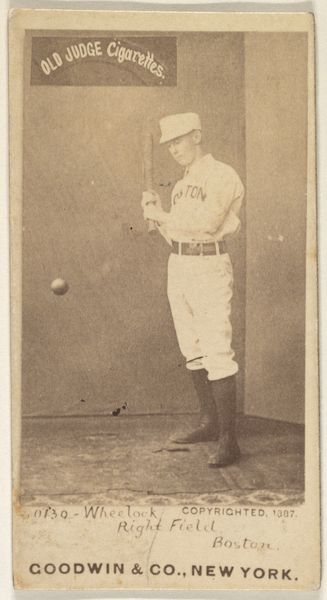
Burdock, 2nd Base, Boston, from the Old Judge series (N172) for Old Judge Cigarettes 1887
0:00
0:00
drawing, print
#
portrait
#
photo of handprinted image
#
drawing
#
aged paper
#
toned paper
#
photo restoration
# print
#
old engraving style
#
baseball
#
coloured pencil
#
men
#
watercolour illustration
#
golden font
#
athlete
#
watercolor
#
historical font
Dimensions: sheet: 2 11/16 x 1 3/8 in. (6.9 x 3.5 cm)
Copyright: Public Domain
Editor: Here we have "Burdock, 2nd Base, Boston," a print from the "Old Judge" series dating back to 1887, attributed to Goodwin & Company. There's a faded, almost ghostly quality to the image, and I am fascinated by its graphic design. What can you tell me about how this print reflects its time? Curator: This baseball card speaks volumes about the socio-cultural landscape of the late 19th century. These cards, initially distributed with "Old Judge" cigarettes, were part of a larger trend of using images, particularly of athletes and performers, to market consumer products. Think about the growing popularity of baseball as a national pastime and the nascent advertising industry's recognition of its potential. Why use baseball players to advertise cigarettes? Editor: It sounds like the branding was a play to male audiences, associating the athleticism and popularity of baseball with their product. Was this a common practice? Curator: Precisely! Cigarette companies used these cards as promotional items to boost sales. Moreover, these cards provide a window into the era’s visual culture and the romanticism surrounding sports heroes. Notice how Burdock is presented: posed, almost stoic, very unlike the candid, action shots we might expect today. How do you think the rise of mass media played a role in making athletes such as Burdock public figures? Editor: So it's like the beginning of celebrity culture, using these prints as a way to manufacture fame and sell products all at once. Curator: Exactly. Furthermore, the "Old Judge" series itself, now highly collectible, demonstrates how consumer culture and artistic representation intertwine. It begs us to think about the politics of imagery. It prompts questions of value; why we memorialize particular figures and pastimes through visual representation, and whose stories get told. Editor: It’s really amazing to think about how something as simple as a baseball card could reveal so much about society and how image distribution actually shaped it. Curator: Absolutely. It makes you consider the broader forces shaping even seemingly trivial cultural artifacts. And in that context, everything, even a baseball card, becomes really fascinating.
Comments
No comments
Be the first to comment and join the conversation on the ultimate creative platform.
